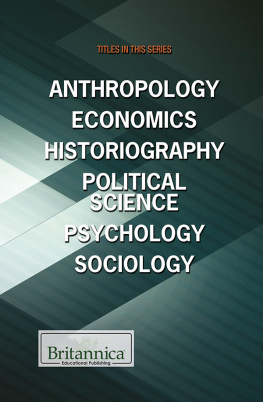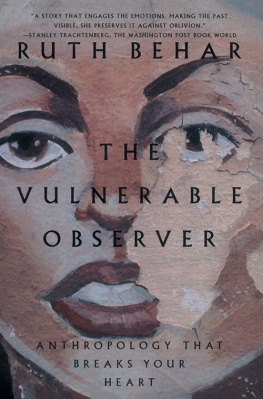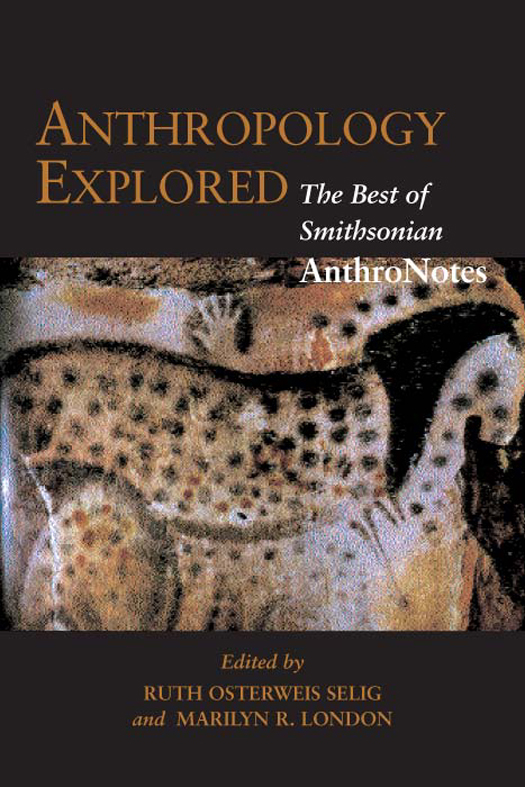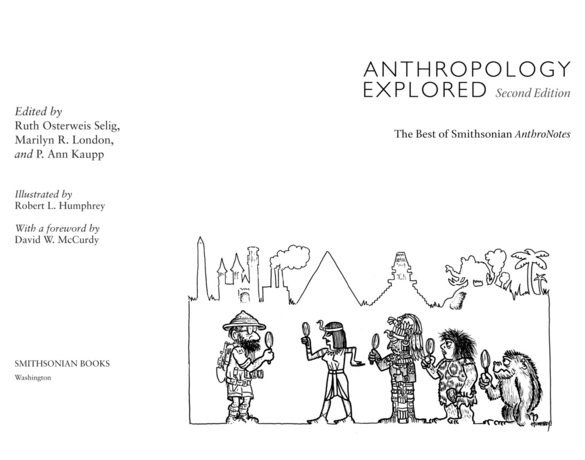2004 by the Smithsonian Institution
Illustrations by Robert L. Humphrey
All rights reserved
Copy editor: Susan Warga
Production editor: Robert A. Poarch
Designer: Kathleen Sims
Library of Congress Cataloging-in-Publication Data
Anthropology explored : the best of Smithsonian AnthroNotes.2nd ed. / edited by Ruth Osterweis Selig, Marilyn R. London, and P. Ann Kaupp; illustrated by Robert L. Humphrey; with a foreword by David W. McCurdy.
p. cm.
eISBN: 978-1-58834-338-3
1. Anthropology. I. Osterweis Selig, Ruth. II. London, Marilyn R. III. Kaupp, P. Ann.
IV. Anthro notes.
GN31.2.A57 2004
301.071dc21 2003045640
British Library Cataloguing-in-Publication Data available
1994, The Washington Post, reprinted with permission.
For permission to reproduce the cartoon illustrations appearing in this book, please correspond directly with the artists estate. Smithsonian Books does not retain reproduction rights for these illustrations individually or maintain a file of addresses for image sources.
Maps for drawings adapted by Marcia Bakry.
All chapters included from the first edition of Anthropology Explored, some with new titles, are newly revised or have new update sections in this second edition. The chapters in this edition are based on the following issues of AnthroNotes: The National Museum of Natural History Publication for Teachers (editors: Alison S. Brooks, P. Ann Kaupp, JoAnne Lanouette, Ruth O. Selig; guest editor, Marilyn R. London, 199497; illustrator, Robert L. Humphrey). Bold entries indicate chapters entirely new to the second edition.
1. vol. 8, no. 3, 1986
2. vol. 19, no. 3, 1997
3. vol. 22, no. 1, 1999
4. vol. 24, no. 1, 2003
5. vol. 14, no. 3, 1992
6. vol. 17, no. 3, 1995
7. vol. 11, no. 2, 1989
8. vol. 18, no. 3, 1996
9. vol. 12, no. 1, 1990
10. vol. 20, no. 1, 1998
11. vol. 18, no. 1, 1996
12. vol. 15, no. 3, 1993
13. vol. 16, no. 2, 1994
14. vol. 14, no. 1, 1992
15. vol. 9, no. 3, 1987
16. vol. 22, no. 1, 2000
17. vol. 14, no. 2, 1992
18. vol. 5, no. 1, 1983
19. vol. 12, no. 3, 1990
20. vol. 22, no. 3, 2001
21. vol. 15, no. 2, 1993
22. vol. 19, no. 1, 1997
23. vol. 12, no. 2, 1990
24. vol. 20, no. 2, 1998
25. vol. 6, no. 1, 1984
26. vol. 19 no. 2, 1997
27. vol. 7, no. 3, 1985
28. vol. 18, no. 3, 1996
29. vol. 23, no. 1, 2002
30. vol. 23, no. 2, 2002
31. vol. 12, no. 1, 1990
32. vol. 22, no. 2, 2001
33. vol. 10, no. 2, 1988
34. vol. 17, nos. 12, 1995
35. vol. 23, no. 2, 2002
36. vol. 13, no. 3, 1991
v3.1
To the memory of Robert L. Humphrey
As an anthropologist, I particularly enjoy drawing for AnthroNotes because I am able to work as an artist and an anthropologist simultaneously.
CONTENTS
FOREWORD
David W. McCurdy
PREFACE
Ruth Osterweis Selig
THE ART OF ANTHROPOLOGY: A Note from the Artist
Robert L. Humphrey
INTRODUCTION: Human Origins, Diversity, and Cultures
Ruth Osterweis Selig
1 APE-ING LANGUAGE: COMMUNICATING WITH OUR CLOSEST RELATIVES
Kathleen D. Gordon
Teaching chimpanzees to communicate may shed light on the evolution of human language
2 ARE HUMANS INHERENTLY VIOLENT?
Robert W. Sussman
Assessing the role that learning and aggression play in chimpanzee and human society
3 ONE MANS SEARCH FOR HUMAN ORIGINS
Ruth Osterweis Selig and Rick Potts
A pioneering approach to and theory of human evolution, with an update by Rick Potts
4 NEW RESEARCH IN EARLY HUMAN ORIGINS 7 TO 1 MILLION YEARS AGO
Alison S. Brooks and Rick Potts
New evidence of variety, adaptability, and sophistication among our earliest ancestors
5 THE EMERGENCE OF MODERN HUMANS
Alison S. Brooks
DNA and other studies help answer where, when, and why modern humans first appeared
6 THE REAL FLINTSTONES: ARTISTS DEPICTIONS OF HUMAN ANCESTORS
Diane Gifford-Gonzalez
The accuracy of artistic renderings of prehistoric human life
7 STORIES BONES TELL
Kathleen D. Gordon
Case studies of victim identification, diet, and human migrations reflect use of new technologies
8 DISEASE IN HUMAN EVOLUTION
George J. Armelagos, Kathleen C. Barnes, and James Lin
The resistance of many infections to antibiotics today is seen as the latest major health crisis in human history
9 THE MOCHE: AN ANCIENT PERUVIAN PEOPLE
John W. Verano
New evidence of ritual human sacrifice among the Moche of Peru, 1,200 years before the Inca
10 AMERICAS MIAs: FORENSIC ANTHROPOLOGY IN ACTION
Robert W. Mann and Thomas D. Holland
Recovering and repatriating American service members (POWs/MIAs) lost in past wars
11 A NEW WAY TO LOOK AT RACE
Boyce Rensberger
People are the same in all essentials but highly diverse in a few things
12 RACE AND ETHNICITY
Alison S. Brooks, Fatimah L. C. Jackson, and Roy Richard Grinker
Decoding the human genome impacts studies of variation; ethnicity helps define identity in the United States
13 AGRICULTURAL ORIGINS IN THE ANCIENT WORLD
Melinda A. Zeder
Solving the mysteries of agricultural origins and impact in the ancient world
14 PROGRESS? THE FACTS OF ANCIENT LIFE
Mark N. Cohen
The view that ancient human nutrition declined and disease increased creates debate
15 ETHNOARCHAEOLOGY AMONG THE EFE: AFRICAN HUNTER-GATHERERS
John W. Fisher Jr.
A traditional people help archaeologists interpret ancient sites and understand globalizations impact
16 THE VIKINGS: OLD VIEWS AND NEW FINDINGS
William W. Fitzhugh
New archaeological evidence challenges old stereotypes and misconceptions
17 WHO GOT TO AMERICA FIRST? FACT AND FICTION
Stephen Williams
Controversial evidence and lack of evidence for early contacts with the Americas
18 RESEARCHING THE FIRST AMERICANS: ONE ARCHAEOLOGISTS JOURNEY
Ruth Osterweis Selig and Dennis J. Stanford
Searching for the first Americans, with an update by Dennis Stanford on possible Atlantic crossings
19 THE FIRST SOUTH AMERICANS: ARCHAEOLOGY AT MONTE VERDE
Tom D. Dillehay
Humans living in Chile as early as 12,500 years ago, as documented at the Monte Verde site
20 WHO WERE THE ANCIENT MAYA?
Jeremy A. Sabloff
New research changes traditional views of Maya history and accomplishments
21 ORIGINS OF AGRICULTURE IN EASTERN NORTH AMERICA
Ruth Osterweis Selig and Bruce D. Smith
Discovering a new independent center of agricultural origins, with an update by the researcher profiled
22 EAST MEETS WEST: NEW VIEW OF ARCTIC PEOPLES
William W. Fitzhugh
Eskimo cultures through time, with new insights into global warming and the environment
23 THE ARCHAEOLOGY OF AFRICAN AMERICAN LIFE
Theresa A. Singleton
New research directions and theoretical frameworks by a leading specialist in an increasingly important field








